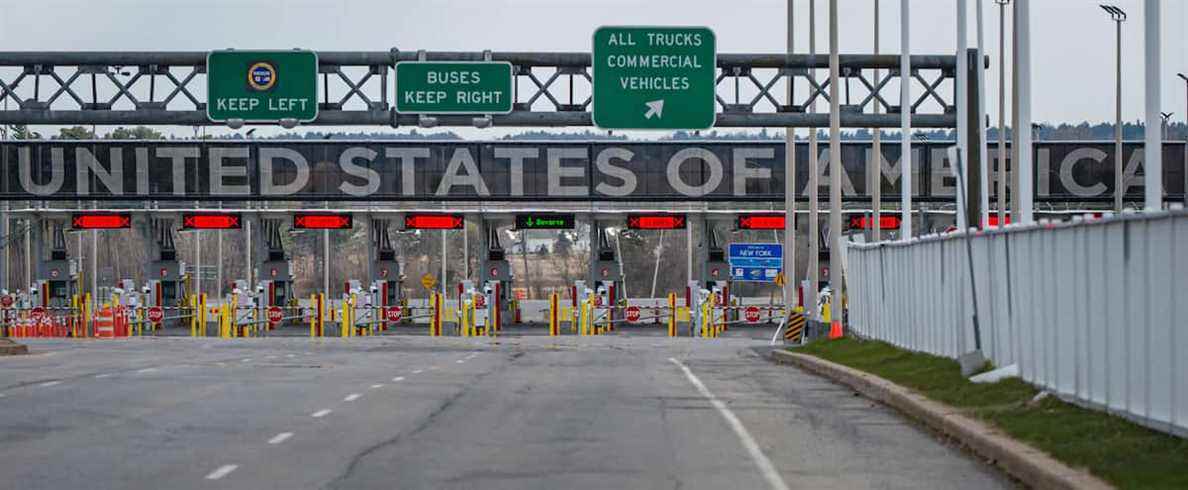The United States is preparing to reopen its land and air borders to travelers vaccinated against COVID-19 on Monday, ending 20 months of particularly badly experienced restrictions in Europe or among neighbors Mexico and Canada.
• Read also: Snowbirds camp near the border
Separated families, disrupted business relationships, thwarted professional ambitions: the “travel ban” imposed by Donald Trump at the start of 2020, then confirmed by his successor Joe Biden, has been widely criticized and has become emblematic of the upheavals caused by the pandemic .
To guard against the countries most affected by COVID-19, Donald Trump quickly imposed restrictions on travel from China in February 2020. Then on March 13, it was the turn of the countries of Schengen Europe . Great Britain and Ireland followed a few days later, while the land borders with Mexico and Canada were largely closed.
With all these countries, the density of human and economic exchanges is immense.
“It was so hard”, “I just want to see my son”, told AFP Alison Henry, a 63-year-old Briton who will fly on Monday to find her son living in New York after 20 months of separation.
In many families, on both sides of the Atlantic, there is a lot of excitement before this family reunion. It had been possible to travel from the United States to Europe since last summer, but foreigners settled in the United States and holding certain visas had no guarantee of being able to return home.
To cope with this influx of demands, airlines have increased the number of transatlantic flights. They will use bigger planes, because this lifting of restrictions also represents a breath of fresh air for a sector plunged into crisis by the pandemic.
Along the immense Mexican border, many American cities, in Texas or California, have suffered economically from this restriction on trade. They are eagerly awaiting a return to normal.
More anecdotally, in the north of the continent, the rich Canadian retirees will be able without fear, at the time of the first frost, to undertake their annual transhumance by car towards Florida and its climatic delicacies.
More than thirty countries are affected by the lifting of this “travel ban”. But entry will not be completely free and the US authorities intend to closely monitor the vaccination status of travelers, at the same time as they will continue to require negative Covid tests.
For travelers arriving by air, the United States will request from Monday, in addition to proof of vaccination and a test within three days before departure, the establishment by the airlines of a contact tracking system.
For the overland route, the restrictions will be lifted in two stages.
From Monday, people coming for reasons deemed non-essential, for example family or tourism, will be able to cross the border of Canada or Mexico, provided they are vaccinated. People coming for compelling reasons – for example truck drivers – will be exempt.
But from January, the vaccination obligation will apply to all visitors crossing land borders, regardless of their reason for entry.
US health authorities have also indicated that all vaccines approved by the World Health Organization (WHO) would be accepted.
For the moment, according to the emergency procedure put in place by the WHO, this is the AstraZeneca, Johnson & Johnson, Moderna, Pfizer / BioNTech, Indian Covaxin, Sinopharm and Sinovac vaccines. These two Chinese vaccines will therefore make it possible to cross the borders of the United States.
The American authorities have not yet commented on the rise in the number of Covid cases in Europe.
The WHO is once again alarmed at the “very worrying” rate of transmission of Covid-19 in Europe, which could lead to half a million additional deaths on the continent by February. This fourth “massive” wave hits in particular Germany, with which the Biden administration is particularly looking after its relationship.
But the chief medical officer of the United States Vivek Murthy said he was “cautiously optimistic” Sunday on the ABC channel, about the current evolution of the pandemic in the United States.
